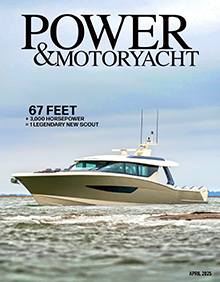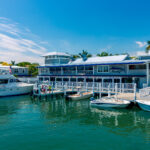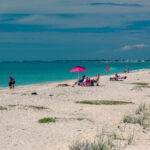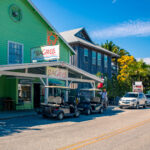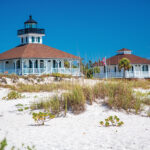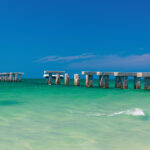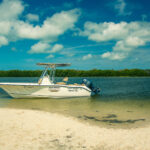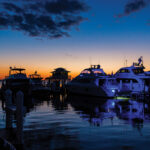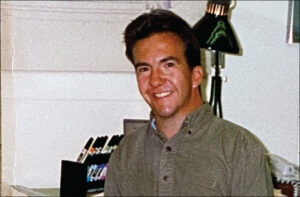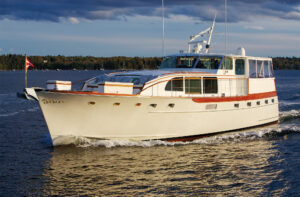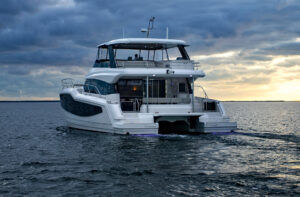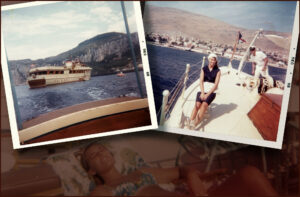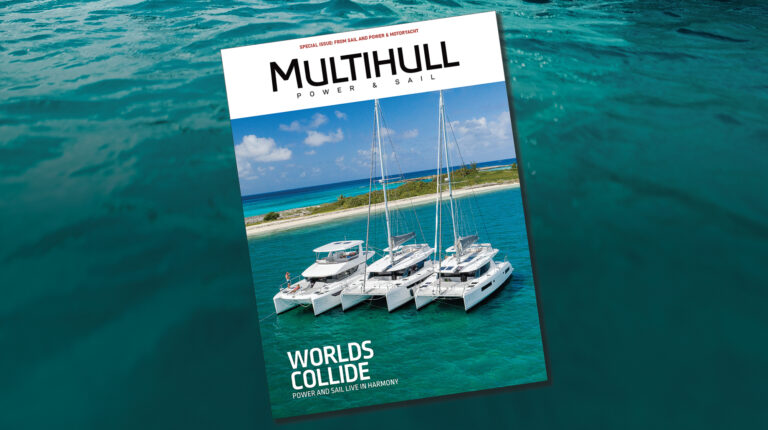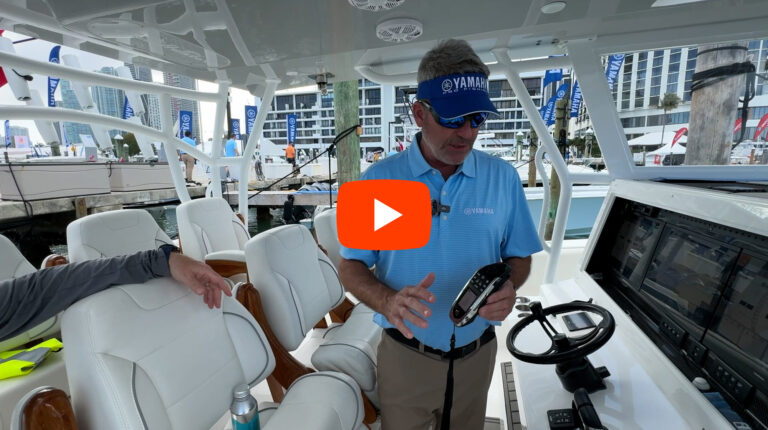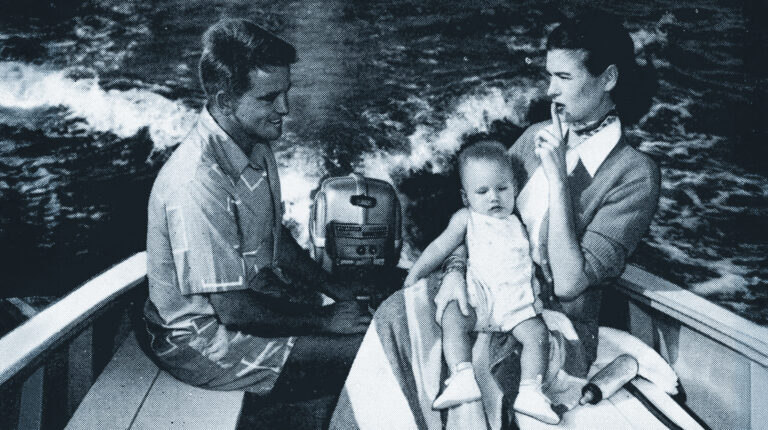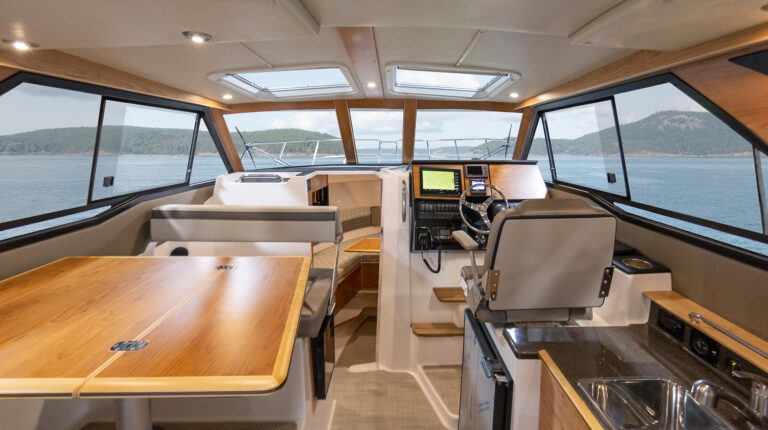Photos by Dori Arrington

Boca Grande
With a permanent dinghy dock maintained by the park service, the island is open for boaters to explore. Hiking and biking trails crisscross the island, allowing easy access to the Gulf Coast beaches and prized shelling opportunities.
Being referred to as a big mouth is usually not a good thing, but the early Spanish navigators exploring Florida’s Gulf Coast meant no derision when they named a wide, deep inlet “Boca Grande.” Labeled on our nautical charts today exactly as it was on the Spaniards’ 500 years ago, Boca Grande Pass, which separates the southern end of Gasparilla Island from the northern end of Cayo Costa, is one of Florida’s deepest natural inlets.
Entering from the Gulf of Mexico, the inlet opens into Charlotte Harbor, with Gasparilla Sound to the north and Pine Island Sound to the south. The combined waters make up the Charlotte Harbor Estuary, one of the most biologically diverse bodies of water in Florida. The estuary and nearby offshore Gulf waters have been prized for their plentiful fishing since the first Calusa tribes settled the area over 5,000 years ago. Today, these waters still draw anglers from around the globe. An annual tarpon tournament, based in the village of Boca Grande on Gasparilla Island, is the richest tarpon fishing tournament in the world.
While fishing has always been a draw, early developers on Gasparilla Island were concerned people would be reluctant to make the overland trip to this remote spit of land. To attract visitors to the new Gasparilla Inn, which opened in 1911, an inventive marketing person created the fictional pirate character of José Gaspar, for whom the island was reportedly named. The Inn’s visitors were lured with the possibility of finding Gaspar’s buried treasure. While it’s fairly certain that neither Gaspar nor his treasure ever really existed, visitors quickly discovered the island’s real treasures: aquamarine water and soft sand beaches.
The village of Boca Grande is the center of action on Gasparilla Island. With no gas stations on the island, the Boca Grande Marina’s street-side pump keeps the local fleet of golf carts topped off. The carts have become so ubiquitous on the island, many old-time residents will make references to “BC” times—before carts.
Throughout the 20th century, the village of Boca Grande and Gasparilla Island grew into an exclusive seasonal retreat for the wealthy, who were drawn to the mild winter temperatures. Northern industrialists, including the DuPonts and the Crowninshields, invested heavily in the town. Today, the central business district still serves residents with locally owned grocery, department and hardware stores dating to the 1950s.

Opinions vary on whether island life changed for the better or worse when the causeway was built in 1958, bringing an end to the exclusivity of the limited passenger ferry and rail service. Fortunately, the beautiful train station in the center of town was preserved, and is now home to a popular restaurant and shops. The former rail-bed is a beloved bike path running the length of the 7-mile-long island.
Gasparilla Island does not have large resorts or high-rise residential properties. The island’s year-round population of approximately 2,000 residents can easily double in the winter months, and the island is quietest during late summer, with visitors avoiding the oppressive heat and risk of hurricanes. Many businesses reduce hours or close for portions of September and October.
Fishing made Boca Grande famous, and it is still a large part of island life, with highly experienced local charter guides treating visitors to some of the best fishing in the world. Originally, the fishing guides’ docks were located on the well-protected Sound side of the island. Back then, most of the guides lived in Boca Grande and maintained a sense of friendly competition. Today, the charter docks are gone and the guides are more likely to live on the mainland, traveling over in their boats to pick up guests. Anglers come year-round through a rotating season for Spanish mackerel, bluefish, snapper and record-sized tarpon.

While most visitors arrive via the causeway, travelling by boat provides the greatest opportunity to enjoy the area, including the neighboring island of Cayo Costa, designated as a state park and only
accessible by boat. Cayo Costa has no residential homes, but it does have cabins for camping. The 9-mile-long island plays an important role in protecting the Charlotte Harbor Estuary. Pelican Bay, on the east side of Cayo Costa, has one of the most scenic and well-protected anchorages on Florida’s Gulf Coast. With a permanent dinghy dock maintained by the park service, the island is open for boaters to explore. Hiking and biking trails crisscross the island, allowing easy access to the Gulf Coast beaches and prized shelling opportunities.
If you feel like you’re in paradise while you’re anchored here, you’re not alone. The islands to the south of Boca Grande Pass include Cabbage Key with its island inn and bar, which served as the inspiration for Jimmy Buffett’s popular song “Cheeseburger in Paradise.” Cabbage Key has been a landmark inn and fishing lodge since the 1930s, hosting many famous personalities, including Ernest Hemingway, Katharine Hepburn, President John F. Kennedy, Kevin Costner and Julia Roberts, all of whom were drawn to the remote island’s unique vibe.

The Cabbage Key bar is also famous for its dollar bill wallpaper. According to the current owner, Rob Wells III, someone pinned a dollar bill to the wall soon after the bar opened. “No one remembers exactly why the person did it, but it didn’t take long for more to appear,” Wells says. “Reportedly the reasons varied. Was it for luck? A way to remember past visitors? Or was it commercial fishermen who would reclaim their dollar during a bad day of fishing?” Wells estimates that approximately $70,000 is pinned to the walls. Nearly $20,000 falls off each year, which the family donates to local charities. While nobody knows exactly why this tradition started, it has indisputably added to the quirky and friendly atmosphere.
With or without pirates, the Boca Grande area, including Gasparilla, Cayo Costa and Cabbage Key, is full of treasures waiting to be discovered. Cruise to these islands to experience “Old Florida,” complete with quiet beaches, bountiful fishing and peaceful island life.


